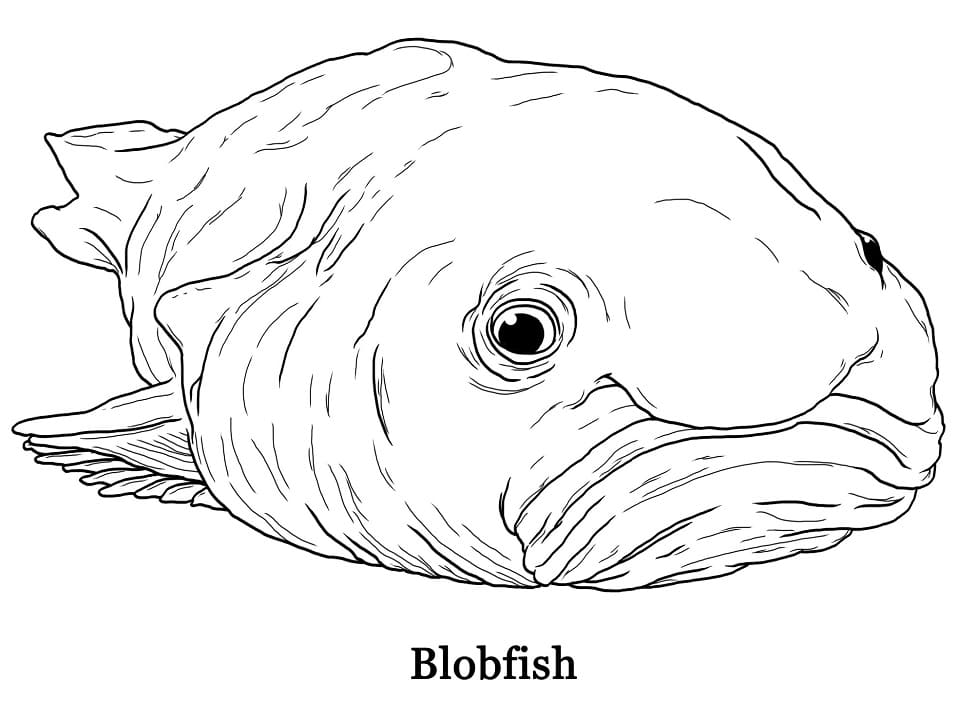

A habitat that's challenging to reach is also challenging to disturb, and the thousands of feet of water above the animals' soft heads may protect these strange creatures from the threat of extinction many surface animals face. This separation of worlds may benefit the blobfish in the end. A blobfish-oriented research expedition would be "a very expensive proposition," Gomon said, "just because of the depth they occur in." "We just don't know that much about them."Īnd scientists aren't likely to learn much more anytime soon. "Their general biology would be one of the biggest questions," Gomon said. (Image credit: copyright Museums Victoria and Marine National Facility) Protected by the deep seaĪside from what researchers can infer from the few samples collected, nearly everything else about blobfish remains a mystery. When swimming a few thousand feet below the water's surface, blobfish look rather handsome, and much more like normal fish. Blobby had a serious advantage in the 2013 ugliest animal competition, one that most deep-sea fish would have shared if pulled from the ocean's supportive environment and left to sag in the air. Although he has never handled a blobfish in its natural environment, he said that, in our world, the consistency of a blobfish resembles something like jello. "You'll find that many of these animals living down there do not have a lot of hard structures," Gomon said.


Without the developed musculature of surface fish, Psychrolutidae bob along the bottom, unperturbed by the relentless pull of gravity that dogs us up on the surface - until they are hauled up by a trawler and their delicate countenance melts into a permanent pout. Deep-sea fish lead more lethargic lives, moving slowly and only when absolutely necessary. As such, many deep-sea dwellers eschew oxygen-burning muscles and the strong, calcium-dense bones found in their shallower-dwelling and more-athletic cousins, such as tuna or swordfish. "Probably, based on the size of the mouth, one would guess that they're feeding on invertebrates that live right on the bottom."įar removed from the life-supporting rays of the sun, deep-sea fish live in a world devoid of many food options, which means that energy efficiency is key to survival. "They'll feed on whatever they're able to opportunistically take in as a meal," said Martin Gomon, an ichthyologist at the Museums Victoria in Australia. This construction makes the fish neutrally buoyant, neither rising nor sinking, which lets them float motionlessly as they wait for prey, such as snails and other bottom dwellers. Rather, natural selection has equipped the blobfish with exclusively incompressible parts, such as water-filled cells and organs not unlike most of our own. The water presses in on animals there with more than 100 times the atmospheric pressure we feel on land, making the compressible swim bladders that many surface fish use to control their buoyancy less practical for these deep-sea creatures. Blobby at a depth of between 3,323 and 4,396 feet (1,013 to 1,340 meters) somewhere between New Caledonia and New Zealand, according to the Australian Museum, where the fish currently resides as a specimen.īumbling along the bottom, thousands of feet beneath the waves, the blobfish's world is cold, dark and empty. While trawling the ocean to conduct a biodiversity census, the crew netted Mr. Blobby," as they nicknamed him, along with many other marine species during the Australian-New Zealand NORFANZ research voyage. Researchers collected and photographed "Mr. References to the fish family known as fathead sculpins ( Psychrolutidae) first appeared in the scientific literature more than 150 years ago, but the specific individual destined for viral internet fame surfaced in 2003. Ironically, the animal's marquee feature - its signature flab - is not what sets it apart rather, that's a commonality the fish shares with many other denizens of the deep. Scientists must infer how it spends its days and what it eats from the physical characteristics of the blobfish's environment and the biological features of fellow deep-sea fish. While these days the blobfish has enough face recognition to make other arguably more charismatic creatures envious, researchers know very little about this enigmatic species.


 0 kommentar(er)
0 kommentar(er)
